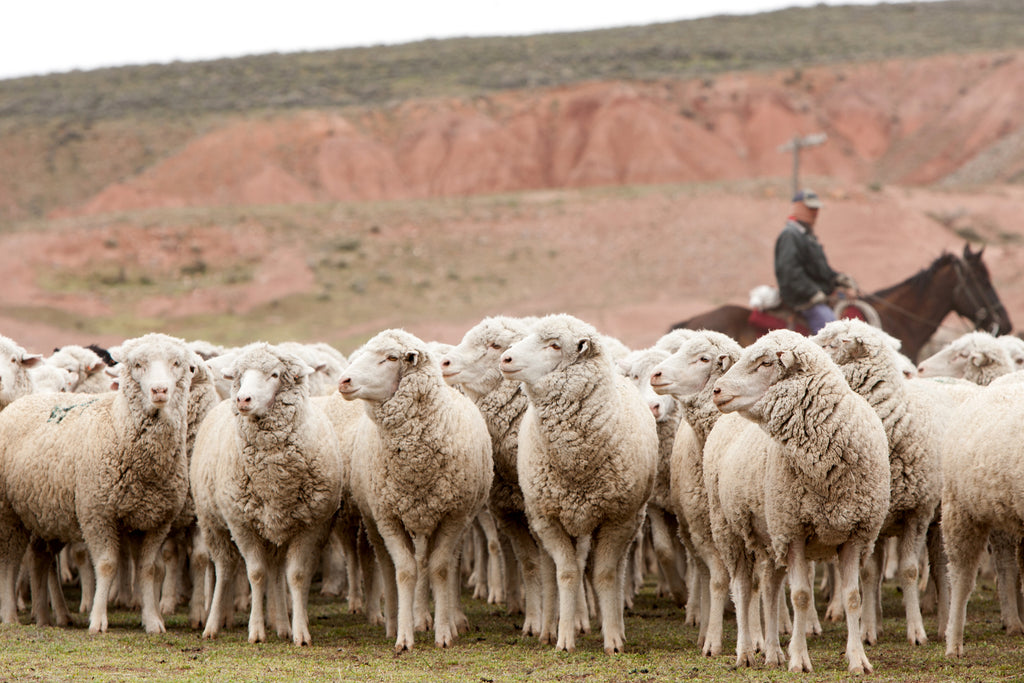Farm To Feet is 100% American - meaning all of our materials are domestically sourced and our socks are manufactured in the USA. Many people are unaware that the United States produces wool, which is probably due to the fact that the global wool supply chain is dominated by countries like Australia, New Zealand, and China whereas the USA's contribution is minimal. Nevertheless, America is home to over 85,000 sheep ranchers that produce both meat and wool. This past year, Farm To Feet and our friends at the American Wool Council sponsored SNEWS - an outdoor industry news organization - to research and report on the wool industry. Below is a summary of their reports with links to the original story.
For many, wool kindles thoughts of scratch sweaters from our youth. Yet wool used in today's apparel industry is quite soft and is used in a numerous next to skin applications including underwear and base layers. Wool socks tend to be regarded as winter weather items - especially for the coldest and snowiest of days. What many fail to realize is that wool is a year-round fiber that is temperature regulating - keeping you cool in the summer and warm in the winter. in "100 things you didn't know about wool,"Corey Buhay discusses wool: where it comes from, how it is processed and finally the types of products that use it.
 Farm To Feet uses merino wool that is primarily grown in the western part of the country from states as south as Texas and New Mexico through the Rockies into states like Montana and the Dakotas. In "Wool, American Style" - Tracy Ross shares the stories of several US Ranchers and the challenges they face as they raise sheep that provide the wool for our socks.
Farm To Feet uses merino wool that is primarily grown in the western part of the country from states as south as Texas and New Mexico through the Rockies into states like Montana and the Dakotas. In "Wool, American Style" - Tracy Ross shares the stories of several US Ranchers and the challenges they face as they raise sheep that provide the wool for our socks.
After the wool is sheared off the sheep, it is then transported to a top making facility where it is converted from an agricultural product into a textile product. For our wool, this takes place at Chargeurs Wool in Jamestown, SC. Tracy Ross also visited this facility as well as our manufacturing company - Nester Hosiery - to learn about the supply chain that takes the wool from the ranch to the sock or as her article details "From Farm, to Factory, to Feet."



